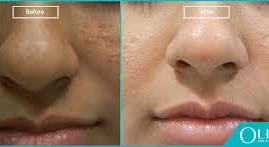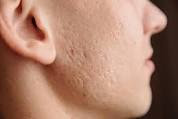**Unveiling the Secrets of Skin Tan Removal: Tips, Tricks, and Treatments**
The allure of a sun-kissed glow has captivated hearts and minds for generations, yet excessive sun exposure can leave behind unwanted consequences in the form of a stubborn skin tan. Whether you've spent too much time in the sun or simply want to lighten your complexion, the journey to skin tan removal can be both challenging and rewarding. In this comprehensive blog, we'll explore the causes of skin tanning, the risks associated with prolonged sun exposure, effective tan removal techniques, and tips for maintaining healthy, radiant skin.
**Understanding Skin Tanning:**
Skin tanning is a natural defense mechanism employed by the skin to protect itself from the harmful effects of ultraviolet (UV) radiation emitted by the sun. When exposed to UV radiation, the skin produces melanin, a pigment responsible for giving the skin its color. Increased melanin production leads to a darkening of the skin, resulting in what is commonly referred to as a "tan."
While a tan may initially appear aesthetically pleasing, prolonged or excessive sun exposure can have detrimental effects on skin health. UV radiation can damage the skin's DNA, leading to premature aging, sunburn, and an increased risk of skin cancer. Additionally, repeated exposure to UV radiation can exacerbate existing skin conditions, such as hyperpigmentation and melasma, and accelerate the formation of wrinkles and fine lines.
**Effective Tan Removal Techniques:**
If you're looking to lighten your complexion and reduce the appearance of a tan, there are several effective techniques and treatments available:
1. **Exfoliation:** Regular exfoliation helps remove dead skin cells from the surface of the skin, revealing fresher, brighter skin underneath. Use a gentle exfoliating scrub or chemical exfoliant containing ingredients such as alpha hydroxy acids (AHAs) or beta hydroxy acids (BHAs) to slough away dead skin cells and promote skin renewal.
2. **Topical Skin Lighteners:** Over-the-counter and prescription skin lightening creams containing ingredients such as hydroquinone, kojic acid, vitamin C, and niacinamide can help reduce melanin production and lighten hyperpigmented areas of the skin. Apply these creams consistently as directed by a dermatologist to achieve optimal results.
3. **Chemical Peels:** Chemical peels involve the application of a chemical solution to the skin, which causes controlled exfoliation and peeling. Superficial peels containing glycolic acid, lactic acid, or salicylic acid can help lighten hyperpigmented areas and improve skin texture and tone.
4. **Laser Therapy:** Laser treatments, such as fractional laser resurfacing and intense pulsed light (IPL) therapy, target melanin pigments in the skin, breaking them down and lightening hyperpigmented areas. Laser therapy can be highly effective for treating stubborn tans and sun damage, but it may require multiple sessions for optimal results.
5. **Home Remedies:** Natural ingredients such as lemon juice, yogurt, honey, and aloe vera have been used for centuries to lighten and brighten the skin. While these home remedies may offer mild skin-lightening effects, they are not as potent or predictable as medical treatments and may cause irritation or sensitivity in some individuals.
**Prevention and Maintenance:**
While skin tan removal techniques can help lighten hyperpigmented areas and restore a more even complexion, prevention is always the best strategy when it comes to maintaining healthy, radiant skin. Here are some tips for preventing future tanning and protecting your skin from sun damage:
1. **Wear Sunscreen:** Apply a broad-spectrum sunscreen with an SPF of 30 or higher to all exposed areas of skin every day, even on cloudy or overcast days. Reapply sunscreen every two hours or more frequently if swimming or sweating.
2. **Seek Shade:** Limit your time in direct sunlight, especially during peak sun hours between 10 a.m. and 4 p.m. Seek shade under trees, umbrellas, or awnings when outdoors, and wear protective clothing, such as wide-brimmed hats and long-sleeved shirts, to shield your skin from UV radiation.
3. **Wear Protective Clothing:** Opt for clothing with a tight weave and dark colors, which offer better protection against UV radiation. Consider wearing UV-protective clothing, sunglasses with UV-blocking lenses, and wide-brimmed hats for added sun protection.
4. **Avoid Tanning Beds:** Avoid the use of tanning beds and sunlamps, as they emit harmful UV radiation that can damage the skin and increase the risk of skin cancer.
5. **Stay Hydrated:** Drink plenty of water to keep your skin hydrated and supple, and use moisturizers containing ingredients such as hyaluronic acid, glycerin, and ceramides to lock in moisture and maintain skin health.
**Conclusion:**
Skin tan removal is a journey that requires patience, consistency, and proper care. By understanding the causes of skin tanning, adopting effective tan removal techniques, and prioritizing sun protection and skin maintenance, you can achieve a brighter, more even complexion and maintain healthy, radiant skin for years to come. Remember, prevention is key when it comes to protecting your skin from sun damage, so be proactive about sun protection and embrace healthy habits that promote skin health and vitality.
Call now
on our Mobile 8669086098 to book an appointment
Kindly visit our website Derma Solutions to know more.
#skintan #sunexposure #UVrediation #Skin_Lighteners #laser_therapy #skindoctor #dermatologist




Comments
Post a Comment